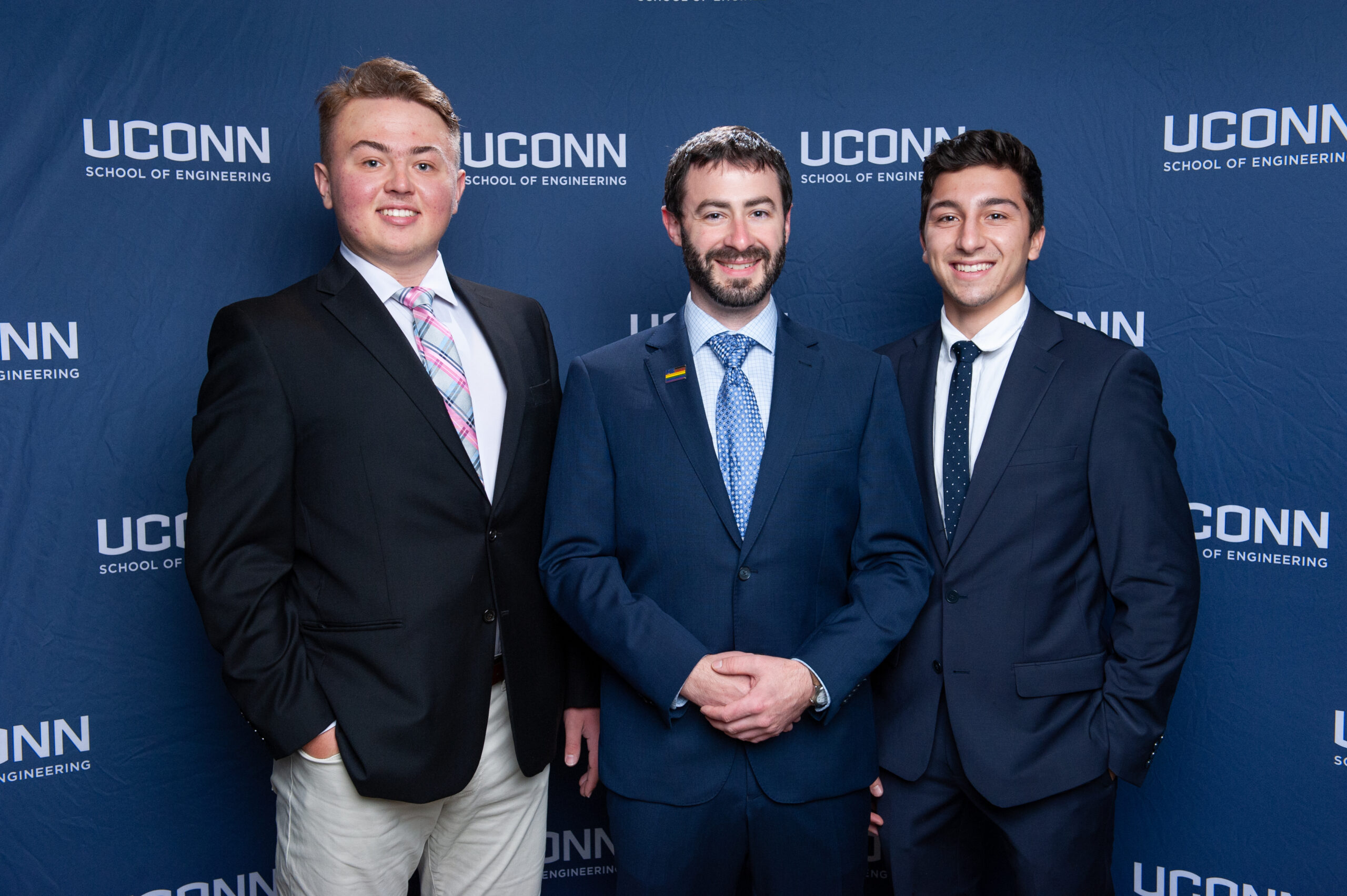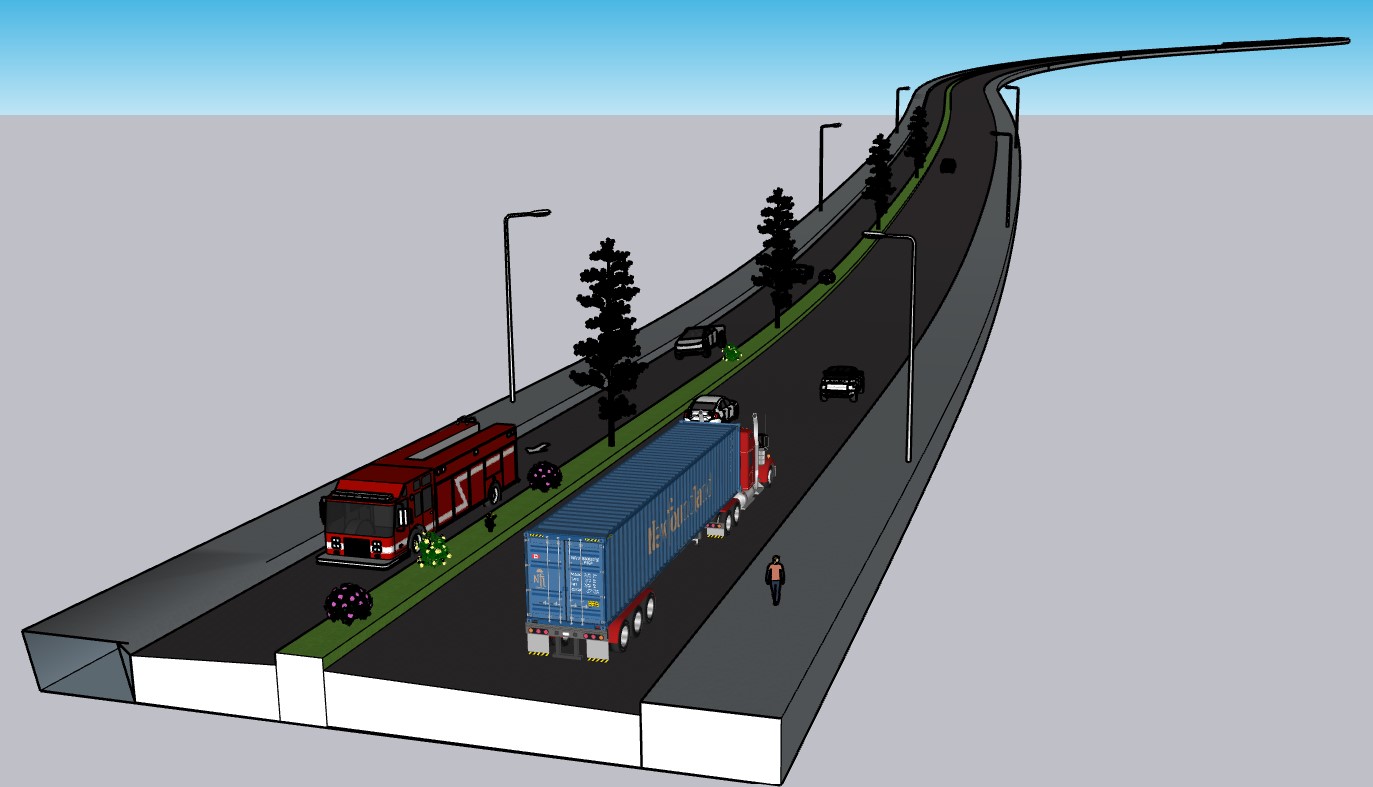
Figure 1

Team 21
Team Members |
Faculty Advisor |
Jacob Zakrzewicz |
Manish Roy, Ph.D. Sponsor Other |
sponsored by

Design of the Extension of Constitution Boulevard West in Shelton, CT
Senior Design Team 21 was tasked with designing the extension of an existing roadway through woodland to allow vehicular access to a large, City-owned property in Shelton, CT. This development has been a consistent top priority within the City’s Plan of Conservation and Development to allow for industrial economic growth in a healthy mix within existing residential, light commercial, and open space land uses. Shelton has already developed connections with companies interested in constructing buildings on this land. Addressing project feasibility, Shelton divided this road extension project into two phases. This project’s scope is defined by Phase 1 which extends the western end of Constitution Boulevard South from where it currently terminates at Bridgeport Ave. to terminate in a cul-de-sac approx. 3100ft into the woodland. The City of Shelton expects this completed roadway to stimulate economic development and increase public access to open land. Phase 2 will increase mobility and safety of commuting traffic by connecting Phase 1 to the existing intersection with Rt. 108. The design process began with evaluation of existing conditions using publicly available data and hand calculations. Local ecology, current land use, and topography were evaluated through the use of ArcGIS Pro and OpenRoads. Hand calculations established the pre-development water runoff, infiltration, and storage. These approximations informed results derived using HydroCAD. Through the combined visualization of a 3-D terrain model, existing wildlife habitats, land use, wetlands, and property boundaries, three roadway alignment and profile proposal alternatives were developed. Each alternative was evaluated to determine the most cost-effective road design that minimizes environmental impacts, rock cut and fill requirements, and allows for future economic development that will not negatively impact water quality for the local community and regional ecology.
